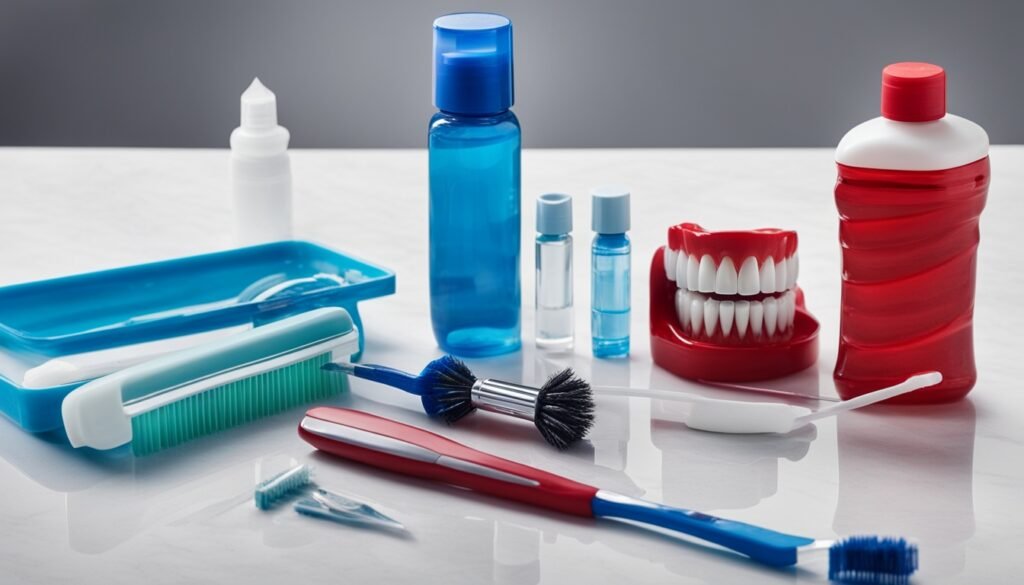Quick Facts – Best Dental Floss
- Floss cleans the tight spaces where a toothbrush cannot reach.
- Daily flossing helps prevent gum disease, cavities, and bad breath.
- Different floss types suit different needs, such as wide gaps or braces.
- Floss picks make flossing easier for people who struggle with string floss.
- Proper technique matters as much as the brand you choose.
Looking for the best floss to keep your teeth clean and your smile bright? You’re in the right place. Flossing reaches the tight spaces between teeth that your toothbrush misses, breaking up plaque before it hardens.
With so many floss options, it can feel a bit unclear. This guide explains why flossing matters, the main types of dental floss, and the best floss picks for different needs. By the end, you’ll know exactly what suits your mouth and your routine.
If you are building a small health kit at home, you may also like the best thermometers for kids and the best pulse oximeter for home use to round out your family care basics.
 (All images are AI-generated)
(All images are AI-generated)
Why flossing matters for oral health
Brushing twice a day is essential, but toothbrush bristles do not reach every surface. Plaque, food, and bacteria collect:
-
Between teeth
-
Under the gumline
-
Around dental work
When plaque sits, it can harden into tartar. Tartar increases the risk of:
-
Gum inflammation
-
Gum disease
-
Tooth decay
Flossing once a day helps break up soft plaque before it becomes a bigger problem. It also removes trapped food that can cause bad breath.
Main benefits of daily flossing
-
Clears plaque and bacteria between teeth
-
Lowers the risk of gum disease and cavities
-
Reduces bad breath caused by trapped debris
-
Helps teeth and gums stay healthier for longer
Most dentists recommend flossing at least once per day, often at night, to keep your mouth clean while you sleep.
Types of dental floss for different needs
Everyone’s mouth is a little different. The best dental floss for you depends on tooth spacing, dental work, and your comfort level.
1. Interdental brushes (proxabrushes)
These small brushes work well if you have:
-
Wide gaps
-
Braces
-
Bridges
-
Crowns or implants
The bristles slide between teeth and around hardware, brushing away plaque where regular floss might struggle.
2. Traditional string floss
Traditional floss is the classic option. It may be:
-
Waxed or unwaxed
-
Flat or rounded
-
Flavored or unflavored
Waxed floss tends to slip between tight teeth more easily. Unwaxed floss can give a bit more “grip” on plaque. Both work well if you use the proper technique.
3. Floss picks
Floss picks are small plastic tools with a short piece of floss stretched across a forked end. They are helpful if you:
-
Find it hard to wrap floss around your fingers
-
Want something quick and easy on the go
-
Struggle to reach back teeth with traditional floss
They do not replace good technique, but they can make flossing feel less awkward.
4. Super floss
Super floss is designed for special situations such as:
-
Braces
-
Fixed bridges
-
Wide spaces around implants
It usually has three parts:
-
A stiff end that threads under wires or bridges
-
A spongy middle section for wider gaps
-
A regular floss section for standard spaces
This combination lets you clean around hardware and then glide through regular contacts in the same routine.

(All images are AI-generated)
How to floss properly with string floss
Good technique matters as much as the floss you buy. Here is a simple step-by-step method for standard string floss:
-
Measure the floss
Tear off about 18 inches of floss. -
Wrap and hold
Wrap most of the floss around the middle finger of one hand. Wrap the rest around the middle finger of the other hand. Use your thumbs and index fingers to guide a short section. -
Slide gently between teeth.
Guide the floss between teeth with a gentle back-and-forth motion. Avoid snapping it down onto the gums. -
Shape into a “C”
Curve the floss around the side of one tooth in a “C” shape. -
Move up and down
Slide the floss up and down against the tooth surface and slightly under the gumline. Then move to the neighbouring tooth in the same space. -
Use a fresh section
Roll the used floss to one side and a clean section to the middle as you move around your mouth.
This method helps remove plaque along the side surfaces of each tooth and near the gumline.
Benefits of floss picks for easy flossing
Floss picks can make flossing feel less fiddly, especially for beginners or anyone with limited finger movement.
Why floss picks help
-
Better control: The handle gives more control, especially at the back of the mouth.
-
More comfort: You don’t need to wrap floss tightly around fingers.
-
More consistency: Because they are easy to use, people are more likely to floss daily.
-
Portable: You can keep a few in your bag, car, or desk for quick use.
As long as you still follow good technique, floss picks can be a solid part of your daily routine.
Top floss picks for different needs
When comparing floss picks, consider:
-
Floss strength and shred resistance
-
How easy the handle is to grip
-
How well the floss fits into tight spaces
-
Eco impact of the materials
-
Price per pack
Here are three example categories:
1. Strong floss picks
These have:
-
Thick, durable floss
-
Less risk of snapping or shredding
-
Handles shaped for a firm grip
Good if you tend to break regular floss.
2. Gentle floss picks for sensitive gums
These focus on comfort:
-
Softer floss to reduce irritation
-
Slightly wider thread that feels gentle at the gumline
-
Smooth edges on the pick to avoid scratching
Best for people with tender gums or early gum issues.
3. Eco-conscious floss picks
These aim to reduce waste:
-
Handles from plant-based or recycled materials
-
Less plastic than standard picks
-
Some use biodegradable floss types
They suit people who want cleaner teeth and fewer plastic items in the trash.
How to use dental floss picks correctly
Floss picks are simple, but technique still matters.
-
Hold the pick
Grip the handle firmly between thumb and index finger. -
Slide between teeth
Gently guide the floss between two teeth with a slight sawing motion. -
Curve in a “C”
Wrap the floss around one tooth in a “C” shape so it hugs the surface. -
Move up and down
Move the floss up and down along the side of the tooth and just under the gumline. -
Repeat for each space.
Rinse the pick if needed or move to a new pick once the floss looks worn or frayed. -
Throw it away
Floss picks are single-use. Discard them after you finish.
Using floss picks this way gives you many of the same benefits as traditional floss.
Extra dental hygiene tips for a healthy smile
Flossing works best as part of a whole mouth-care routine:
-
Brush twice daily with a soft-bristle brush and fluoride toothpaste.
-
See your dentist regularly for cleanings and check-ups, usually twice a year.
-
Watch your diet by limiting sugary snacks and drinks that feed decay-causing bacteria.
-
Clean your tongue with a scraper or your toothbrush to reduce bacteria and bad breath.
-
Use mouthwash if your dentist suggests it, especially an alcohol-free rinse with plaque-fighting ingredients.
These habits work together with flossing to support long-term oral health.
FAQ
The best floss depends on your teeth and gums. People with tight spaces often prefer waxed or thin floss. Those with wider gaps, braces, or bridges may do better with super floss or interdental brushes. Pick a floss that feels comfortable, slides easily, and does not shred.
Flossing removes plaque and food from areas a toothbrush cannot reach. This reduces the risk of gum disease, cavities, and bad breath. Daily flossing, combined with brushing and regular dental visits, helps keep your mouth cleaner and healthier.
Traditional string floss works well for most mouths—interdental brushes or super floss suit braces, bridges, and wide gaps. Floss picks help if you find regular floss hard to handle. Your dentist can suggest the best option for your teeth and dental work.
Floss picks can clean between teeth effectively when used correctly. They offer more control, especially for back teeth, and may help you floss more often. If you use them daily and follow a proper up-and-down motion, they can be a strong part of your routine.
Most dentists recommend flossing at least once a day. Many people prefer flossing in the evening so they go to bed with a clean mouth. You can floss more often if food tends to get trapped between your teeth.
Both orders can work. Many people floss before brushing, so toothpaste and fluoride can reach the clean spaces between teeth more easily. The most important thing is that you floss and brush every day, in a way that you can maintain long-term.
Mild bleeding can occur if you are new to flossing or if you have early gum irritation. Keep flossing gently for a week or two and see if it improves. If bleeding continues or gets worse, speak with your dentist to rule out gum disease or other issues.
Yes, floss picks can help children learn to clean between their teeth. An adult should guide them at first, then supervise until they can floss safely on their own. Ask your child’s dentist when to start flossing based on how close their teeth are.
DISCLAIMER:
This blog post is for informational purposes only. We make every effort to provide accurate, current, and well-sourced information, but we cannot guarantee its completeness or absolute accuracy.
All images, videos, and logos used on bestfordaily.com belong to their respective owners. We aim to credit and reference them appropriately. If you are the rightful owner and wish to have your image, video, or logo removed, please contact us.
Author
-

Hey there! I'm Andrew Reed, and I live for the thrill of writing reviews. Dive into my world at bestfordaily.com, where I unpack stories behind products and experiences. I'm all about sharing my unique take on things, infusing each review with my youthful enthusiasm and a dash of social flair. Join me on this exciting journey—I promise you won't just read reviews; you'll experience them!
View all posts






